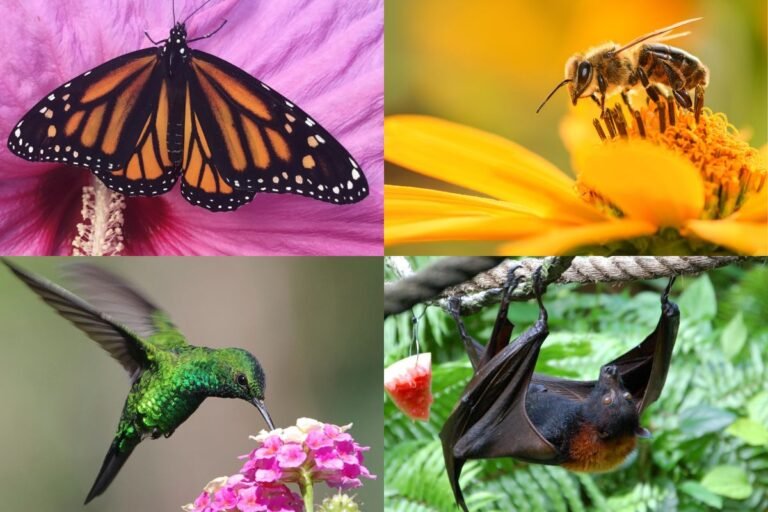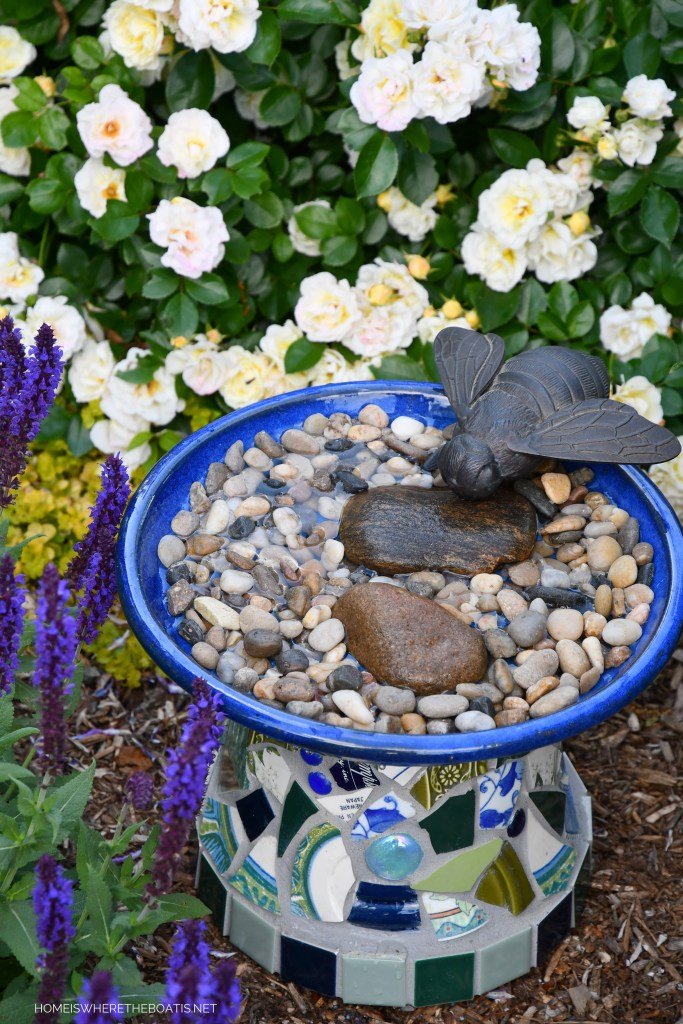Pollinators like bees and butterflies need water to survive. Keeping their water sources clean and accessible is crucial.
Maintaining pollinator water sources helps ensure that these vital creatures can thrive in your garden. Without clean water, pollinators may struggle to stay healthy and active. It’s important to create and upkeep these sources in ways that support their needs.
This blog will explore eight essential tips to help you maintain effective and inviting water sources for pollinators. By following these tips, you can make a positive impact on local ecosystems. Let’s dive in and learn how to keep our buzzing and fluttering friends hydrated and happy.
Importance Of Pollinator Water Sources
Pollinators like bees, butterflies, and birds need water to survive. Providing them with clean water sources is crucial. They play a vital role in our ecosystem. Without them, many plants would not reproduce.
Role In Ecosystem
Pollinators help plants grow. They move pollen from one flower to another. This process is called pollination. It is essential for plant reproduction. Many crops rely on pollination. Without pollinators, our food supply would decrease.
Pollinators also support biodiversity. They help many plant species to thrive. This, in turn, supports a wide range of wildlife. Healthy ecosystems depend on pollinators.
Benefits For Pollinators
Water sources benefit pollinators in many ways. First, they provide hydration. Pollinators need water to survive. Dry spells can be harmful to them. A reliable water source can be a lifesaver.
Second, water sources help pollinators regulate their body temperature. On hot days, they use water to cool down. This helps them stay active and healthy.
Lastly, clean water sources can reduce the spread of diseases. Pollinators often share water. If the water is dirty, it can spread germs. Clean water helps keep them healthy.
| Pollinator | Water Needs | Benefits |
|---|---|---|
| Bees | High | Hydration, Cooling |
| Butterflies | Moderate | Hydration, Temperature Regulation |
| Birds | High | Hydration, Bathing |
By maintaining pollinator water sources, we support their health. This, in turn, supports our environment.
Choosing The Right Water Source
Maintaining pollinator water sources is crucial for supporting healthy ecosystems. Choosing the right water source is the first step in ensuring these water sources are effective and safe. Understanding the different types of water sources will help you make an informed choice.
Types Of Water Sources
There are several types of water sources you can use for pollinators. Here are some common options:
- Birdbaths: Shallow and easy to maintain. Ideal for small spaces.
- Ponds: Natural look. Great for large gardens.
- Water dishes: Simple and versatile. Can be placed anywhere.
- Drip systems: Provide a constant water supply. Require more maintenance.
Natural Vs. Artificial
Choosing between natural and artificial water sources depends on your space and resources. Here are some points to consider:
| Natural Water Sources | Artificial Water Sources |
|---|---|
|
|
Both natural and artificial water sources have their benefits. Think about your garden’s layout and the level of maintenance you can handle. This will guide you to the best choice for your pollinators.
Proper Placement
Proper Placement is crucial for maintaining effective pollinator water sources. Where you place the water can impact its accessibility and safety for pollinators. Below are guidelines on the best spots for placement.
Ideal Locations
Choose locations that are easily accessible to pollinators. Place water sources near flowering plants where pollinators frequently visit. Ensure the site is sunny but not too hot. Partial shade can help maintain water temperature.
Table: Ideal Locations for Pollinator Water Sources
| Location | Benefits |
|---|---|
| Near Flower Beds | Frequent visits by pollinators |
| Under Trees | Provides partial shade |
| Garden Corners | Less human disturbance |
Avoiding Predators
Safety is vital for pollinators. Avoid placing water sources near predator habitats. Stay away from dense bushes or areas where birds or cats are frequent. Always ensure a clear line of sight for the pollinators. This reduces the risk of sudden attacks.
List: Tips to Avoid Predators
- Keep water away from dense shrubs.
- Place sources in open, visible areas.
- Elevate the water source if possible.
Ensuring Clean Water
Maintaining clean water sources for pollinators is essential. Pollinators like bees, butterflies, and birds need safe water to thrive. Dirty water can harm them and spread diseases. Follow these tips to ensure your pollinator water sources stay clean.
Regular Cleaning
Regular cleaning is crucial for keeping pollinator water sources clean. Here are some easy steps:
- Empty the water container every few days.
- Scrub the container with a brush.
- Use mild soap and water to wash it.
- Rinse thoroughly to remove soap residues.
- Refill with fresh water.
Repeat these steps every few days to prevent algae growth and bacteria buildup.
Preventing Contamination
Preventing contamination helps keep water sources safe for pollinators. Follow these guidelines:
- Place the water container in a shaded area.
- Avoid placing it near bird feeders or pet bowls.
- Use shallow containers to prevent drowning.
- Add pebbles or stones for pollinators to land on.
- Change the water regularly, especially in hot weather.
These practices help keep the water clean and safe for pollinators.
Providing Safe Access
Ensuring pollinators have safe access to water sources is crucial. It helps them stay hydrated without risking their lives. Creating a safe environment involves a few key considerations.
Landing Spots
Pollinators need stable landing spots. These spots help them drink water safely. Use stones or pebbles in your water source. This gives pollinators a place to land. Floating cork pieces also work well. They provide a stable surface for bees and butterflies.
Water Depth
Shallow water is essential. Pollinators can easily drown in deep water. Aim for a depth of one to two inches. This is enough for them to drink safely. Use a shallow dish or birdbath. Fill it with water to the right depth.
Regularly check the water level. Evaporation can reduce the depth quickly. Refill the water source as needed. This ensures pollinators always have access to safe drinking water.
Adding Essential Nutrients
Provide clean water for pollinators by adding essential nutrients. These nutrients support their health and enhance biodiversity.
Pollinators need water sources rich in essential nutrients. These nutrients support their health and energy levels. Adding minerals and sugar to water can help maintain a balanced diet for pollinators. Let’s explore some easy ways to add these essential nutrients.Mineral Sources
Minerals are vital for pollinator health. You can add mineral-rich substances to water sources. Crushed eggshells are a great option. They provide calcium, which strengthens pollinator bodies. Another option is to use rock dust. It adds various trace minerals. Sea salt is also helpful. It offers essential minerals like magnesium and potassium.Sugar Water Tips
Sugar water is an excellent energy source for pollinators. Use a simple sugar-water mixture. Combine one part sugar with four parts water. Stir until the sugar dissolves completely. Ensure the water is at room temperature. Hot water can harm pollinators. Place sugar water in shallow dishes. Add small stones for pollinators to land on. This prevents drowning. Change the sugar water daily to prevent mold and bacteria growth. Avoid using honey. It can introduce harmful bacteria to pollinators. “`Monitoring And Maintenance
Maintaining a water source for pollinators requires regular monitoring and upkeep. Proper care ensures that your water sources remain clean and safe for bees, butterflies, and other pollinators. Below, we cover essential tips for routine inspections and seasonal adjustments.
Routine Inspections
Regular checks are crucial for keeping water sources in good condition. Inspect your water source weekly to ensure it is clean and free of debris. Look for any signs of algae or mold, which can harm pollinators.
Use a simple checklist for your routine inspections:
- Check water clarity
- Remove debris
- Look for algae growth
- Ensure the water level is sufficient
Replace the water regularly to prevent stagnation. Fresh water attracts more pollinators and keeps them safe.
Seasonal Adjustments
Different seasons require different maintenance strategies. During hot summer months, water evaporates quickly. Check the water level more frequently and refill as needed. In colder months, prevent water from freezing. Use a small heater or add warm water regularly.
Here are some tips for each season:
| Season | Action |
|---|---|
| Spring | Clean and refill water sources |
| Summer | Check water levels more often |
| Fall | Remove fallen leaves |
| Winter | Prevent water from freezing |
Regular monitoring and seasonal adjustments will keep your pollinator water sources in top condition.
Community Involvement
Engaging the community is crucial for maintaining pollinator water sources. When neighbors and friends get involved, it creates a supportive environment for pollinators. This helps sustain healthy pollinator habitats and boosts local biodiversity.
Educating Neighbors
Start by informing your neighbors about the importance of pollinators. Use flyers, social media, or neighborhood meetings. Explain how pollinators like bees, butterflies, and birds contribute to our ecosystem.
Highlight the necessity of clean water sources for these creatures. Share simple steps they can take to help. For example, suggest adding shallow water dishes with stones in their gardens. This provides pollinators a place to drink without drowning.
Encourage neighbors to use organic gardening practices. Avoiding pesticides benefits pollinators and keeps water sources safe. Provide easy-to-understand resources and tips.
Creating Pollinator Networks
Form a local pollinator network to connect with like-minded individuals. Use social media groups or community apps to organize. Share updates and tips on maintaining water sources.
Plan regular meet-ups or workshops. These events can focus on building and maintaining pollinator habitats. Exchange ideas and experiences. This fosters a sense of community and shared responsibility.
Consider creating a neighborhood map showing pollinator-friendly gardens and water sources. This visual representation can inspire others to join the effort. It also helps identify areas needing more attention.
Here is a sample table to track community involvement:
| Name | Garden Type | Water Source | Organic Practices |
|---|---|---|---|
| Jane Doe | Flower Garden | Shallow Dish | Yes |
| John Smith | Vegetable Garden | Bird Bath | Yes |
| Emily Brown | Mixed Garden | Mini Pond | No |
Involve local schools and youth groups in maintaining pollinator habitats. This educates the younger generation and ensures the longevity of these efforts. A community-wide approach ensures a thriving environment for all.
Frequently Asked Questions
What Are Pollinator Water Sources?
Pollinator water sources are clean, shallow water areas where pollinators can drink safely. They help bees, butterflies, and other insects.
How Often Should Water Be Changed?
Change the water every two days. This prevents stagnation and mosquito breeding, ensuring clean water for pollinators.
What Types Of Containers Are Best?
Shallow containers with rough surfaces are best. They provide easy access and prevent pollinators from drowning.
Why Add Pebbles To Water Sources?
Pebbles create landing spots for pollinators. They help insects drink without the risk of drowning.
Conclusion
By applying these eight essential tips, you help pollinators thrive. Clean water sources are crucial for their survival. Regular maintenance ensures a healthy environment. Pollinators play a vital role in our ecosystems. Your efforts make a big difference. Protecting these creatures supports biodiversity.
Remember, small actions lead to big impacts. Keep these tips in mind and watch your garden flourish. Your dedication to pollinator health is commendable. Thank you for making a positive change.


